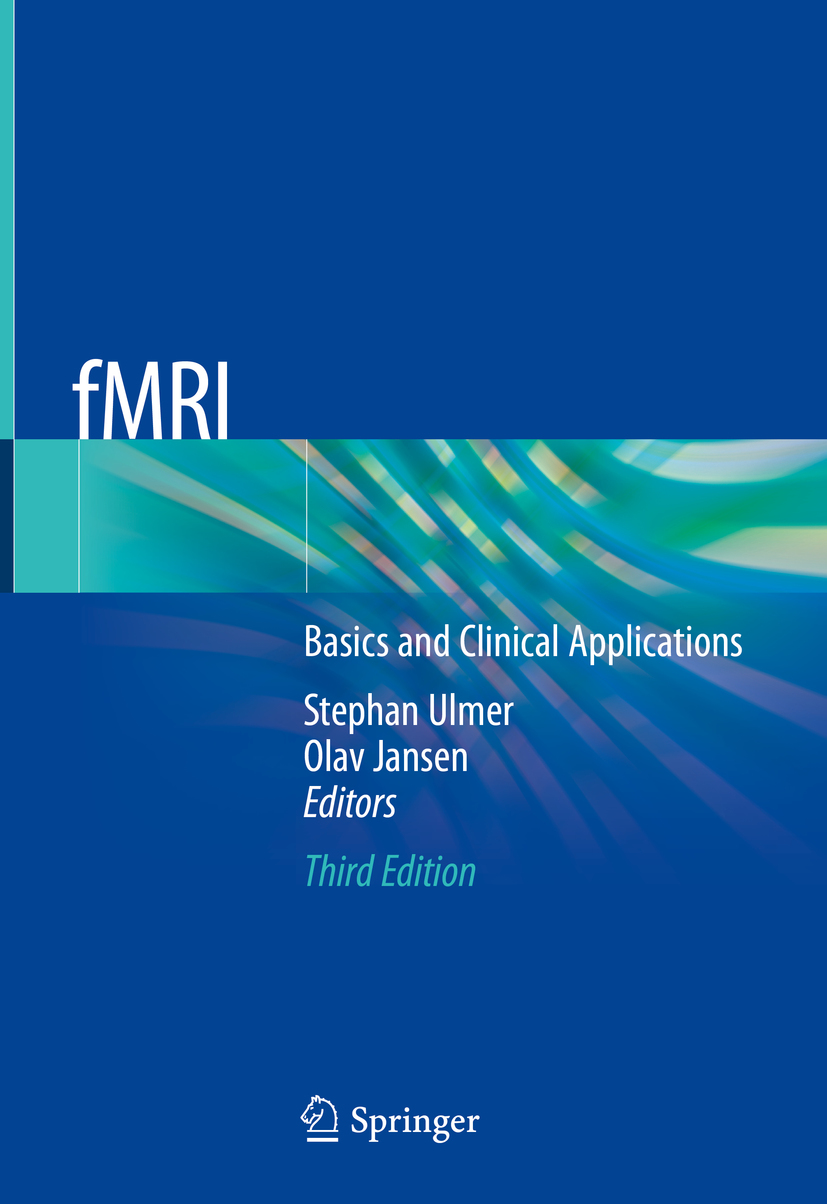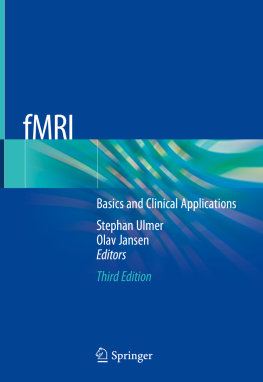Stephan Ulmer - fMRI: Basics and Clinical Applications
Here you can read online Stephan Ulmer - fMRI: Basics and Clinical Applications full text of the book (entire story) in english for free. Download pdf and epub, get meaning, cover and reviews about this ebook. year: 2020, publisher: Springer Nature, genre: Romance novel. Description of the work, (preface) as well as reviews are available. Best literature library LitArk.com created for fans of good reading and offers a wide selection of genres:
Romance novel
Science fiction
Adventure
Detective
Science
History
Home and family
Prose
Art
Politics
Computer
Non-fiction
Religion
Business
Children
Humor
Choose a favorite category and find really read worthwhile books. Enjoy immersion in the world of imagination, feel the emotions of the characters or learn something new for yourself, make an fascinating discovery.
- Book:fMRI: Basics and Clinical Applications
- Author:
- Publisher:Springer Nature
- Genre:
- Year:2020
- Rating:5 / 5
- Favourites:Add to favourites
- Your mark:
- 100
- 1
- 2
- 3
- 4
- 5
fMRI: Basics and Clinical Applications: summary, description and annotation
We offer to read an annotation, description, summary or preface (depends on what the author of the book "fMRI: Basics and Clinical Applications" wrote himself). If you haven't found the necessary information about the book — write in the comments, we will try to find it.
fMRI: Basics and Clinical Applications — read online for free the complete book (whole text) full work
Below is the text of the book, divided by pages. System saving the place of the last page read, allows you to conveniently read the book "fMRI: Basics and Clinical Applications" online for free, without having to search again every time where you left off. Put a bookmark, and you can go to the page where you finished reading at any time.
Font size:
Interval:
Bookmark:


This Springer imprint is published by the registered company Springer Nature Switzerland AG
The registered company address is: Gewerbestrasse 11, 6330 Cham, Switzerland
Thirty years ago, the very basic idea of fMRI has been introduced by Ogawa using T2-weighted images to map changes in blood oxygenation. Since then the technique, paradigms, study designs, and analyzing software have evolved tremendously. Besides its application in basic brain research, it became a very powerful tool in daily clinical routine, especially in presurgical mapping. For the third time, his book focuses on these clinical applications starting from basics and the background, presenting current concepts and their application in a clinical setting.
Understanding brain function and localizing functional areas have ever since been the goal in neuroscience, and fMRI is a very powerful tool to approach this aim. Studies on healthy volunteers usually have a different approach and often a very complex study design, while clinical applications face other problems most commonly related to the limited compliance of the patients. Therefore, the application of fMRI in a clinical setting is a different challenge reflected in the study designs as well as in the analysis of algorithms of the data. Resting-state fMRI will open a new gate in clinical routine. As of now task-related fMRI, i.e., in motor tasks is more robust, but there always have been and will be modifications and improvements. fMRI using ASL might be a new approach. Also, we have learned that its not a functional area but networks were dealing with and functional connectivity is important.
Besides the classical definition of functional areas (such as motor- and language-related areas) that might have been shifted through a lesion or could be located in a distorted anatomy prior to neurosurgical resection, further clinical applications are mapping of recovery from stroke or trauma; cortical reorganization, if these areas were affected; and changes during the development of the brain or during the course of a disease. For psychiatric disorders fMRI offers new horizons in understanding the disease. fMRI also helps us to learn about Parkinsons disease and neurodegeneration such as Alzheimers disease or frontotemporal dementia and changes associated with these diseases. There is also a gap between imaging and clinical findings in multiple sclerosis. Using fMRI, we can monitor functional adaptive or maladaptive reorganization that might help to develop therapeutic strategies. Understanding disorders such as epilepsy, we can now address what fMRI reveals about seizures directly from its onset in the interictal period, through to full clinical expression of the event and eventual termination, although there are technical challenges to do so.
Mapping children represents a twofold challenge. Normative data is not available, and compliance is limited. In early childhood or in cognitively impaired children or just simply during brain development, cognitive tasks need to be modified individually, and that again causes problems in analyzing the data and interpreting the results.
Knowledge of basic neuroanatomy and understanding of the electrophysiological background of the fMRI signal, the physiology, and especially the possible pathophysiology of a disease that might affect the results are mandatory. Therefore, we need the results in healthy volunteers to understand the results in patients. In task-related fMRI, we need to monitor the patient in the scanner to guarantee that the results obtained will reflect activation caused by the stimulation, or why there is reduced or even missing activation. While the patient is still in the scanner, a repetition of the measurement can be performed; however, sometimes patients are not capable of performing the task. Here again resting-state fMRI might offer completely new options. A vascular stenosis or the steal effects of a brain tumor or an arteriovenous malformation (AVM) might corrupt the results. There are other sources of disturbance that might influence the results. For us interdisciplinary cooperation was and is the key.
Font size:
Interval:
Bookmark:
Similar books «fMRI: Basics and Clinical Applications»
Look at similar books to fMRI: Basics and Clinical Applications. We have selected literature similar in name and meaning in the hope of providing readers with more options to find new, interesting, not yet read works.
Discussion, reviews of the book fMRI: Basics and Clinical Applications and just readers' own opinions. Leave your comments, write what you think about the work, its meaning or the main characters. Specify what exactly you liked and what you didn't like, and why you think so.












